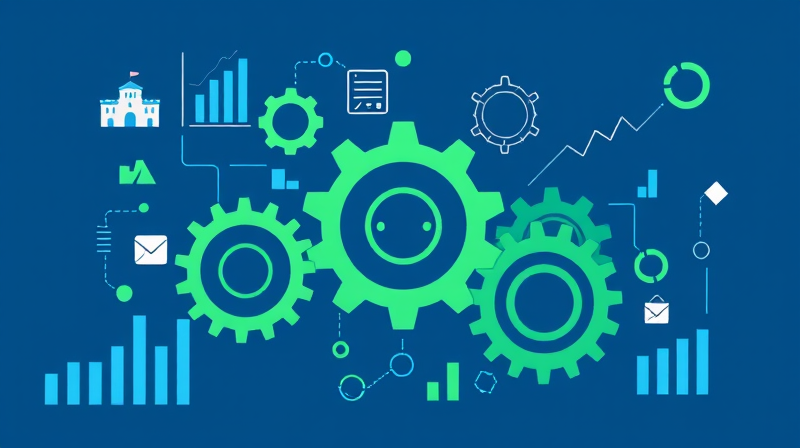In today’s fast-paced online world, understanding customer feedback and identifying genuine products are vital skills for business success and consumer protection. Companies and shoppers alike are challenged by the enormous volume of data and the risk of encountering counterfeit items. This article dives deep into proven techniques for interpreting feedback and ensuring product authenticity, empowering you with the knowledge to make informed decisions.
Feedback analysis is no longer a luxury but a necessity. By paying close attention to customer opinions, businesses can refine products and services while consumers gain confidence in their purchasing decisions. The following strategies outline the multifaceted approach needed to navigate these tasks effectively.
Efficient Methods for Interpreting Feedback
One of the first steps in digesting customer feedback involves selecting the right methods that blend automation with human expertise. The modern market offers several dynamic, AI-powered tools designed to simplify the task. These tools provide insightful, actionable information, which is crucial for running a successful business.
Automated Analysis Tools are at the forefront of this effort. By automating the process, businesses can quickly identify the underlying tone of the feedback and understand user sentiments. Here are some popular automated features:
- Sentiment Analysis: Quickly determines whether the emotion behind customer feedback is positive, negative, or neutral.
- Topic Modeling: Identifies key themes and recurring topics in customer submissions, allowing for a focused response on areas that matter the most.
- Text Analytics: Extracts substantial insights from unstructured text data, revealing hidden patterns that might be missed with manual analysis alone.
Despite the power of these analytical tools, there remains significant value in manual review techniques. Some scenarios require a human touch, especially when dealing with complex, nuanced feedback from a small, targeted audience.
With manual analysis, you can:
- Categorize feedback by various criteria such as sentiment, trending issues, or product features.
- Identify patterns and recurring themes that may indicate chronic issues or emerging trends.
- Prioritize actionable insights based on the realistic impact and ease of resolution.
Visualization methods play an essential role in making sense of the gathered data. Tools such as heatmaps and session recordings provide visual representations that help uncover how users interact with your website or app. When you visualize feedback outcomes through data maps, the nuances of customer behavior become more apparent, improving the clarity of trends and driving better decisions.
The combination of automated tools and manual scrutiny ensures a robust interpretation of customer feedback, arming you with the intelligence needed to adapt swiftly in a competitive marketplace.
Strategies to Identify Genuine Products Online
The digital marketplace is booming, and so is the prevalence of counterfeit goods. Identifying genuine items online may seem challenging at first, but a few critical techniques can protect buyers and retailers from costly fraud.
Start by closely examining product details. Authentic items are typically marked by high-quality materials, precise craftsmanship, and reliable branding. When you encounter a product, consider its quality, packaging, and price as key indicators of genuineness.
Examine Product Details:
- High-quality materials and detail: Authentic items often use superior materials shipped with careful packaging and a trusted brand logo.
- Realistic pricing: Products priced significantly lower than expected may be counterfeit.
- Proper packaging: Genuine items typically come in well-designed, branded packaging that reflects the manufacturer's attention to detail.
Alongside scrutiny of product specifics, modern technology offers a range of tools to verify authenticity. These technological solutions provide an extra layer of security for both consumers and businesses alike.
Utilize Authentication Tools:
- Barcode scanners: Use mobile apps or in-store tools to scan product barcodes, instantly verifying information.
- Online verification platforms: Many brands offer dedicated websites where buyers can check product authenticity by entering product codes or serial numbers.
- Blockchain-based solutions: Emerging technologies using blockchain offer an immutable record of a product's provenance, ensuring a high level of trust.
Equally important is the need to conduct thorough research on any seller before making a purchase online. Investigating the seller’s background, reading reviews, and ensuring they have verified credentials can save you from potential scams.
Always research the seller by looking into seller ratings, verified badges, and genuine customer reviews. Using secure payment methods further fortifies your transaction, ensuring that even if a discrepancy arises, your financial details remain protected.
Consumers should consider methods such as:
- Exploring seller ratings and customer reviews on trusted platforms.
- Verifying seller credentials like verified badges or history on established marketplaces.
- Opting for secure online payment services like credit cards or PayPal to reduce potential fraud risks.
These techniques not only prevent fraud but also build trust, making future online transactions smoother and more reliable.
In conclusion, whether you are a business eager to harness customer insights or a consumer striving to make smarter purchasing decisions, these strategies serve as a robust guide. Empowering yourself with the right tools and techniques can significantly enhance your ability to interpret feedback and differentiate genuine articles from counterfeits. The intersection of feedback analysis and authenticity verification helps create a more trustworthy digital environment where both businesses and consumers thrive.
Remember that constant evolution in technology continuously opens new avenues to further safeguard quality and transparency online. Embrace these advancements with an open mind, and let them guide you towards smarter, safer, and more effective online interactions.
By integrating automated tools with the analytical precision of manual methods and combining product detail examination with modern authentication techniques, you can elevate the experience for customers and set a higher standard for digital commerce. This comprehensive approach is the cornerstone of effective online business practices in our ever-changing digital world.








